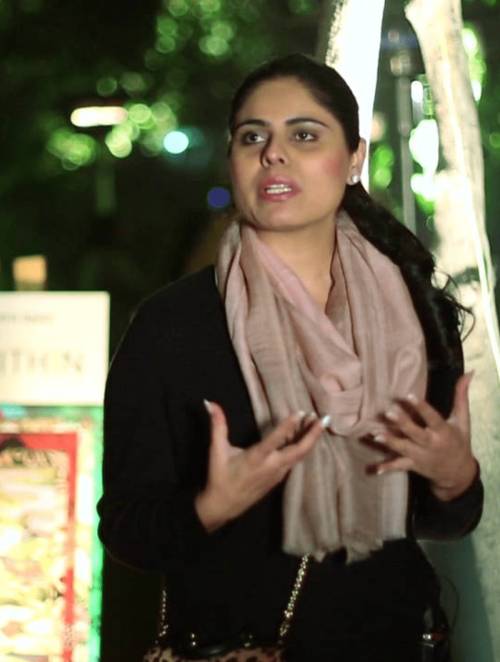Inclusive Children inherit a better World – Let’s Raise Inclusive Children
 30027
30027

We often conceive childhood as a time that is associated with innocence, freedom, and unhindered joy. However, when we reflect upon actual lived experiences as children, many of us can recall painful memories of rejection or inadequacies. Some of those feelings can be attributed to experiencing exclusion in our younger days. It is very likely that the exclusion would have based on class, ability, gender, race, or physical attributes.
Children are naturally inquisitive—babies as young as six months old notice physical differences. By age three, they are aware of natural variations such as gender, skin, hair, and weight. As they get older, however, they will discriminate in selecting their playmates based on the biases they develop through experiences at home and in their larger community.
Why teach inclusivity?
“It’s not our job to toughen our children up to face a cruel and heartless world. It’s our job to raise children who will make the world a little less cruel and heartless.”
― L.R. Knost
We want our children to be happy as well as protect them from experiencing pain and rejection. It is then our moral responsibility to teach them about acceptance so that another child doesn’t suffer due to our biases.
The “other” alone doesn’t benefit from inclusion. It teaches our children to be more accepting of their own differences and therefore be more confident. Inclusivity eventually fosters an environment of mutual respect and understanding.
When and where to start
The sooner we start teaching inclusivity, the more ingrained the values will be. Younger children have been found to be most receptive to such actions. Here are a few ways to get started-
Interesting Facts Related to Parenting
There are various traditions and beliefs practiced with respect to neo-natal care. We have curated a list of some interesting facts and traditional beliefs across the world that could serve as a fun/interesting read:
According to the Greek tradition, parents should spit at a baby three times to ward off the evil eye, evil spirits, and also bad luck.
In Ireland, the tradition is to sprinkle a crushed piece of the parents’ wedding cake on top of the newborn’s head as the baby is being baptized. This symbolizes the circle of life.
Some new parents believe that if a mother consumes her placenta, then she will be prevented from postpartum depression.
In a particular parenting tradition in Maharashtra, India, babies are thrown off the side of a 50-foot temple only to be caught in a sheet below. It is believed that this practice endows the baby with intelligence and courage.
Lead by example
The most effective method to teach inclusivity is to model our own behavior in a way that we expect our child to act. We must examine our own beliefs and prejudices. Does our circle reflect diversity? How do we behave with people from different socio-economic backgrounds or different religions?
Use and teach respectful language.
It requires a great deal of introspection, but we must be conscious of the labels we attach to people. We must provide children with appropriate language that is respectful. It is disrespectful to refer to a person by their color or size. It is also important to teach the distinction between a disability and the person living it. It is not okay to say “the autist girl.” If a reference is necessary, then it is more appropriate to say “the girl with autism.”
Cultivate empathy
Should a child use derogatory language, correct them gently and encourage a conversation on why language can be hurtful and divisive. Explain to children how their words and behavior affect others. It is as simple as putting oneself in another’s shoes.
Would I like it if my peers told me they didn’t want to play with me anymore? If it doesn’t make me feel good, then it must make my friend feel bad too. I like it when my friends sit with me during lunch. Perhaps I should invite the boy sitting alone to come to join us too.
Use children’s literature.
Books provide us with a foundation as well as age-appropriate vocabulary to start conversations about inclusivity. They can empower children with ways to embrace differences and stand up for what they believe is right. Below are some excellent books that convey the message:
Strictly no elephants

Author: Lisa Mantchev
Illustrator: Taeeun Yoo
Warm illustrations provide the perfect backdrop to a story that is sprinkled with reassuring affirmations. A little boy contemplatively worries about acceptance when he says, “it can be tough to fit in when you’re the only one with an elephant”. The local pet club has decided that elephants shall not be allowed in. Although visibly dejected, the boy and his beloved pet-friend bravely move on “because that’s what friends do, never leave anyone behind.” Quite literally, when one door closes, another opens. Their circumstance leads them to find new friends. The children find comfort and acceptance in each other’s company and eventually decide to make a club of their own-one that welcomes all.
A Family is a Family

Author: Sara O’Leary
Illustrator: Qin Leng
A diverse class of children is asked to share what makes their family special. The narrator silently worries that her family might be too different to speak about. Meanwhile, other children communicate their assorted family structures such as adopted, single parent, multi-ethnicity, etc. in matter‐of-fact and even humorous descriptions. This gives the narrator courage to finally share her story.
Susan Laughs

Author: Jeanne Willis
Illustrator: Tony Ross
The relatable protagonist of this touching book does a host of activities and feels a range of emotions, much like any little girl her age. She is “just like me, just like you.” It isn’t till the last page do we see Susan smiling and sitting in her wheelchair. Without preaching, the story skillfully focuses on Susan’s abilities rather than her disability.
Those Shoes

Author: Maribeth Boelts
Illustrator: Noah Z. Jones
The author expresses, with a great deal of honesty, the emotions a child can feel in an economically disparate world. We witness Jeremy’s deep desire for shoes he cannot afford. He expresses disappointment when he receives an uncool pair from the school donation pile. He is embarrassed when almost everyone laughs at him. Such is his desperation to have the thrift store pair fit his feet that he wishes his toes would fall off! And eventually, we observe his generosity and kindness when he chooses to give away his precious shoes to another boy whose needs are greater than his.
Pink and Blue

Author: Ritu Vaishnav
Illustrator: Vishnu M Nair
Is pink really for girls and blue for boys? The book questions common gender stereotypes and asks us to respect individual choices regardless of the bias around them. For, in the end, all that matters is how we care for each other.
Follow us-
Instagram/ Facebook/ Youtube/ Pinterest





Leave a Reply